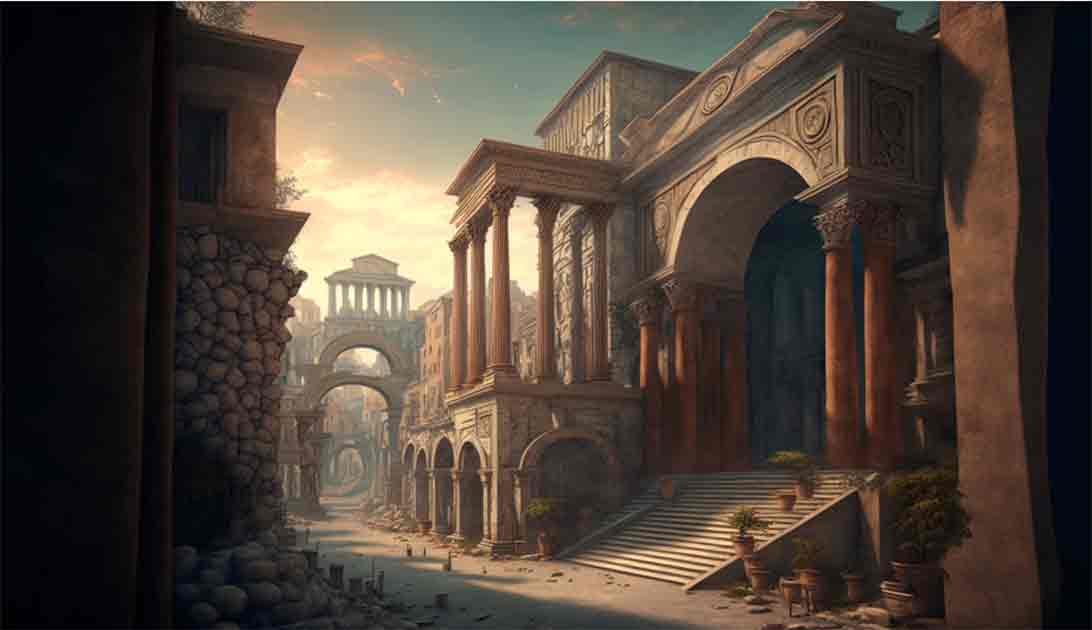Alba Longa and its Legendary Kings
Alba Longa, an ancient city located in the Latium region of Italy, holds a prominent place in the realm of myth and legend. According to tradition, this fabled city's origins can be traced back to the aftermath of Troy's fall, attributed to the legendary hero Aeneas. Within the confines of Alba Longa, the Silvian dynasty, descendants of Aeneas, governed over successive generations, shaping a mythical narrative that would later intertwine with the founding myths of Rome - especially that of the famous Romulus and Remus. Or at least that’s what ancient Roman historians would have us believe. When it comes to Alba Longa it’s next to impossible to separate fact from fiction.
- Ruthless Rulers Did Dark Deeds Right From the Founding of Rome
- Romulus and Remus, Osiris, and Moses: Are the Storytelling Similarities a Mere Coincidence?
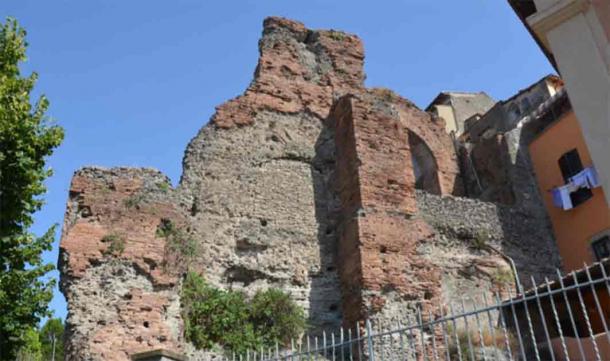
Ruins in Alba Longa, Albano, Italy. (Carole Raddato/CC BY-SA 2.0)
Founding A Latin League
In Roman mythology, the founding of Alba Longa can be traced back to the fall of Troy which, according to the ancient Greek chronologist Eratosthenes of Cyrene, happened in 1184 BC. Following the fall of Troy the Trojan hero Aeneas took the few surviving Trojans across the Mediterranean Sea to first Sicily, then Carthage, and eventually the Italian Peninsula.
- The Voyage of Aeneas of Troy: Did it Really Happen?
- Ruthless Rulers Did Dark Deeds Right From the Founding of Rome
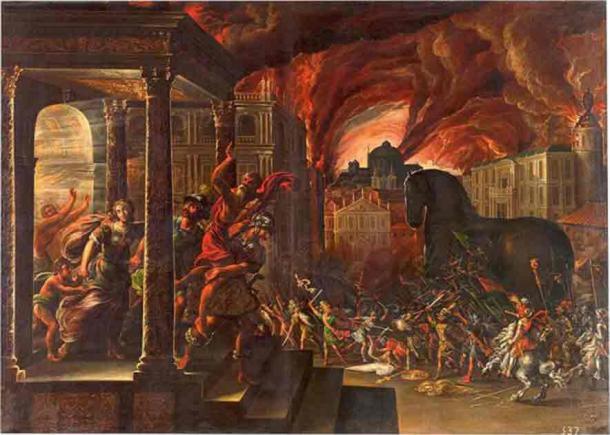
Aeneas and his family fleeing the burning city of Troy, with the Trojan horse in the background, by Juan de la Corte. (Public domain)
Upon his arrival Aeneas and his followers were greeted by Latinus, king of the Latins and according to some, son of Hercules. Depending on the version of the legend, either a battle broke out in which the Trojans won or Latinus was so impressed by Aeneas’s heroics and honor that he welcomed them warmly. Either way, to cement an alliance between the two peoples Aeneas married the king’s daughter, Lavinia, and soon thereafter honored her by founding the city of Lavinium in her name.
When Latinus later fell in battle his new son-in-law was made the king of the Latins. These were dangerous times and Aeneas was only king for a few short years before dying in battle himself. His son, Ascanius, replaced him and became the new king of the Latins. According to Roman legend, it was he who built Alba Longa on the slopes of Mount Alba, around 20 km (12.42 mi) southeast of modern Rome. The city was a colony of Lavinium, and Ascanius sent around 600 families to live there in around 1151 BC.
Dionysius claimed that Ascanius ruled for thirty-eight years until he died and was succeeded by a new king, Silvius. Most ancient historians recorded that Silvius was simply Ascanius’s son although others, like Dionysus, instead believed him to be Ascanius’s half-brother. In this version of events, he had been kept in hiding because his mother feared Ascanius would have him killed. He only emerged when it became clear the king was ill to claim the throne over Ascanius’s son, Lulus.
The Silvian Dynasty
Whichever is true, Silvius reportedly went on to found several colonies which became known as the Prisci Latini, or "Old Latins". Silvius ruled for twenty-nine years and was eventually replaced by his son, Aeneas. The new king decided to take his father’s surname and from this point onwards all kings of their line adopted the name Silvius as well as their birth names. As such, the Silvian Dynasty and the Latin League were officially born.
Aeneas Silvius also enjoyed a relatively long reign of around thirty-one years and was followed by Latius Silvius who served for fifty-one. Then came Alba for thirty-nine and Atys for twenty-six. Atys was in turn succeeded by Capys (twenty years) and Capetus (thirteen years). Nothing else besides how long these kings ruled was recorded but it seems likely that during this time the Latin league continued to expand as it swallowed up more tribes and villages.
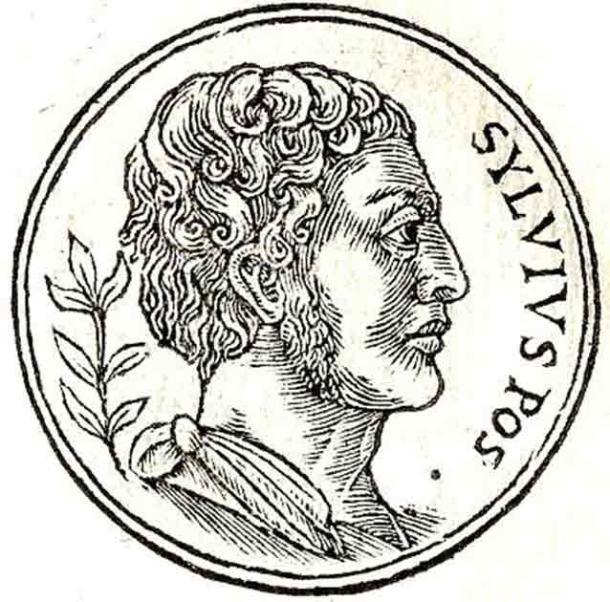
In Roman mythology, Silvius was the son of Aeneas and Lavinia. He succeeded Ascanius as King of Alba Longa. All the kings of Alba following Silvius bore the name as their surname. (Public Domain)
The reign of Capetus’s successor, Tiberinus, is, however, more interesting. Supposedly he drowned while crossing the river Albula. In honor of his death, it was renamed and became the famous river Tiber. In Dionysius’s version of events, Tiberinus died in battle and his body was carried down the river. He is said to have reigned for just eight years.
He was followed by Agrippa (forty-one years) whose son, Romulus Silvius, the historian Livy held particular scorn for. Livy wrote that Romulus was a cruel and arrogant tyrant who disrespected the gods. He would mimic thunder and lightning in front of his people, claiming to be a god in human form. In retaliation, the gods destroyed his familial home with thunder and lightning and caused the nearby lake to flood.
Before his death at the hands of the gods, Romulus Silvius handed the throne over to Aventinus, who reigned for thirty-seven years. After his death, Proca (grandfather of Romulus and Remus, founders of Rome) ruled for twenty-three years. During this time, he produced two sons, Numitor and Amulius. Proca wished for the elder of the two, Numitor, to succeed him. Instead, Amulius drove his older brother into exile and took the throne for himself.
A real jerk, after taking the throne he ordered Numitor’s sons to be killed and made his daughter, Rhea Silvia, a Vestal Virgin. He claimed he did this to honor her, but in truth he was just ensuring she would remain a virgin, effectively killing off her father’s line. Or so he thought.
His plan tragically backfired when Rhea was raped and produced two sons - Romulus and Remus. According to Rhea, she had been raped by Mars, the Roman god of war. Upon hearing this, the evil Amulius had her imprisoned and ordered the two babies to be thrown into the Tiber.
Luckily, the great river was swollen, and the two babies were caught at the base of a fig tree. As the Roman legend goes, a she-wolf found them and suckled them until the shepherd Faustulus discovered and raised them. The two boys stayed with the shepherd and his wife, Acca Larentia, until they had grown into young men. The brothers then took it upon themselves to travel back to Alba Longa and kill their traitorous uncle.
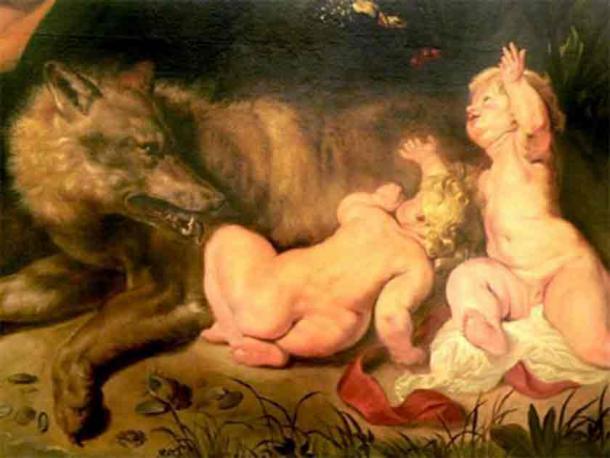
Romulus and Remus by Rubens Detail at the Capitoline Museum, Rome, Italy. (Mary Harrsch / CC BY-SA 2.0)
According to Dionysius the two brothers killed Amulius in the forty-second year of his reign and put their exiled grandfather, Numitor, on the throne. A year later they set out to buy their Alban colony - it would later become Rome. When Numitor died, there was no one left to take the throne and the Silvian line died with him.
War Between Roman and Alba Longa
Dionysius did the math and worked out that Romulus and Remus founded what would become Rome 432 years after Troy fell, so around 751 BC. He reckoned Numitor died shortly afterward and after that, the history of Alba Longa became very muddy for the next hundred years or so.
The next mention of Alba Longa wasn’t made until the reign of the Roman king Tullus Hostilius in the seventh century BC. Roman tradition states he ruled from 673 to 642 BC and wasn’t on the best of terms with his neighbors.
Apparently, Tullus rarely needed much of an excuse to go to war. During his reign, there were a series of cattle raids between Roman and Alban territory that led to a major dispute. The clever Tullus used this as a chance to go to war with the older state.
The Alban king of the time, Gaius Cluilius (no one knows how he connected to the old Silvii line) sent emissaries to Rome to demand reparations and Tullus did likewise. Clever Tullus welcomed the Alban dignitaries so warmly that they put off making their demands. The Roman dignitaries sent to Alban did the opposite and made their demands as soon as they arrived.
The Alban king responded by refusing their demands. Since the Albans had refused his attempts at peace, it made Tullus justified in declaring war. Which he did straight away.
Cluilius raised an army and marched on Rome. His military dug a massive trench that encircled the city. Before the two slides could clash, however, the Alban king died, and his people made one of his generals, Mettius Fufetius, dictator.
Fufetius was wiser than his deceased king and sought to hold a conference with Tullus instead. He told the Roman king that he was worried the Etruscans would see the two armies clashing and attack them both while they were weakened. Instead of a massive battle, Fufetius suggested they decide the victor of the war via a contest of champions.
Tullus saw sense and agreed. It was decided that two sets of triplets would fight to the death - three Horatii would fight for Rome and three Curiatii for Alba Longa. The fight began with the death of two of the Roman triplets. The remaining brother, Publius Horatius, did not give up though, and then slaughtered the three Alban fighters.
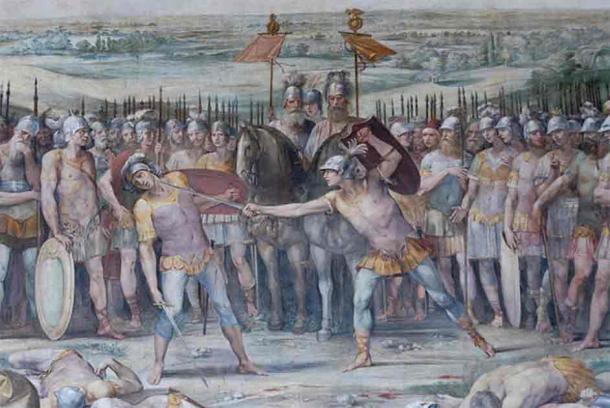
Battle between Horatii and Curiatii. Mettius Fufetius and Tullus Hostilius in the background, by Giuseppe Cesari. (Public Domain)
Upon claiming victory Tullus told the Alban dictator to return home. The Albans had essentially become one of Rome’s first vassal states. Before Fufetius left he was warned by Tullus to be prepared for war against the Etruscan city of Veii.
The Destruction of Alba Longa
Tullus was right to be prepared. Not long after, war broke out between the Romans, Veii and the Fidenates (another neighbor of Rome looking to take out Rome). Fufetius and his Alban army were told to join up with Tullus and the Romans so that they could fight the Etruscans on the banks of the Tiber. Sure enough, the Albans army did as it was told and turned up.
Thinking he was clever, Fufetius waited for the fighting to start and then fled with his troops, stabbing Tullus in the back. Despite being left alone to fight the Etruscans Tullus emerged victorious but extremely angry at Fufetius.
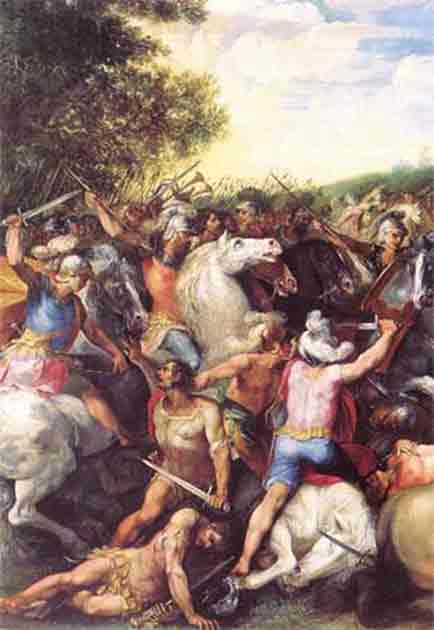
Tullus Hostilius defeating the army of Veii and Fidenae, modern fresco. (Public Domain)
He had the traitorous Alban king executed and ordered his men to demolish Alba Longa. All of its buildings except its temples were raised to the ground and its population was forcibly moved to Rome. This doubled the number of Roman citizens almost overnight.
To ensure peace Tullus made the most powerful Alban families patricians - the Julii, Servilii, Quinctii, Geganii, Curiatii, and Cloelli. To accommodate all these new houses, and the enlarged senate it entailed, Tullus had to build a new senate-house, the Curia Hostilia.
With that the roughly 400-year history of Alba Longa was complete. It may have fallen but its fall was a major steppingstone in the rise of Rome. Or was it?
The Truth
It’s widely accepted that much of the history of Alba Longa was made up by Dionysius and his contemporaries. Roman historians needed to fill in the time gap between the supposed fall of Troy and the founding of Rome and likely did so by taking real Roman history, comparing it with Greek history, and throwing in mythical figures and Greek Olympiads to make things interesting and explain away any gaps.
It’s no coincidence that many of the Alban kings just so happen to have names similar to places around Rome - Tiberinus, Aventinus, Alba, and Capetus for example. Other names are clearly based on mythical figures or are inventions by Roman families seeking to earn status by linking themselves to legendary heroes of old.
Archaeological evidence backs up the idea that much of Alban’s history was invented. For a start, ancient historians disagreed exactly where Alba Longa was supposed to be located. There’s no archaeological evidence that a powerful city-state ever operated in the Alban hills.
There is only evidence that during the late Bronze Age and the Iron Age, the region was home to a string of villages that never got past the pre-urban stage. Instead of becoming a powerful city-state capable of creating the Latin league, these villages never developed into cities before being destroyed by Rome and are very unlikely to have played a role in founding it.
As is so often the case with ancient sources, Roman historians blurred the lines between fact and fiction when describing Alba Longa. While it’s likely some elements of the story are true (for example the existence of some form of the Silvian Dynasty) most of what we know about the state was fabricated. Doing so let Roman historians fill in the many blanks in their knowledge and allowed countless powerful Romans to legitimize their positions by connecting themselves to legendary history.
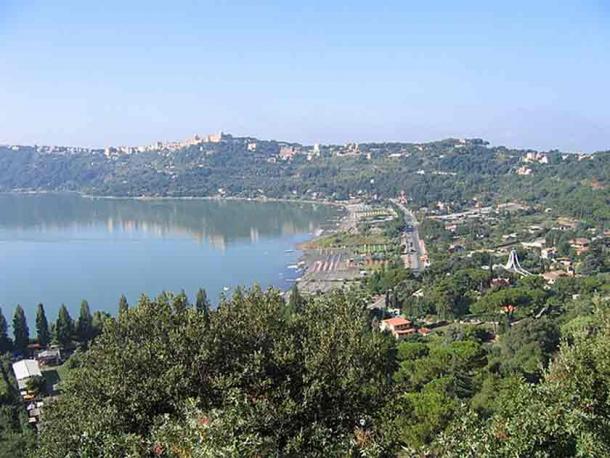
Castel Gandolfo on a long, sunlit ridge overlooking Lake Albano, the most likely site of ancient Alba Longa. (George McFinniganFrom Italian Wikipedia (uploaded by Gaucho)/CC BY-SA 3.0)
Conclusion
Alba Longa, steeped in myth and legend, stands as a captivating enigma in the annals of ancient history. Whether a tangible city or a product of mythological imagination, its legacy endures through the tales of legendary kings and their mythical exploits.
Despite the challenge of separating fact from fiction, the allure of Alba Longa persists, offering a glimpse into the foundational myths of Rome and the ancient origins of Western civilization. As a nexus of myth and history, Alba Longa continues to intrigue scholars and enthusiasts alike, reminding us of the enduring power of storytelling to shape our understanding of the past.
Top image: AI generated image representative of Alba Longa, legendary ancient Roman city. Source: LukaszDesign/Adobe Stock
References
Editor. 2024. The Kings of Alba Longa. Roma Optima. Available at: https://en.wikipedia.org/wiki/Kings_of_Alba_Longa#:~:text=The%20kings%20of%20Alba%20Longa,city%20of%20Rome%20by%20Romulus.
Gill. N. 2020. What Is the Location and Legend of Alba Longa? Available at: https://www.thoughtco.com/alba-longa-region-119289
Hayden. M. 2020. The Legend of Romulus. Available at: https://www.worldhistory.org/article/1664/the-legend-of-romulus/















